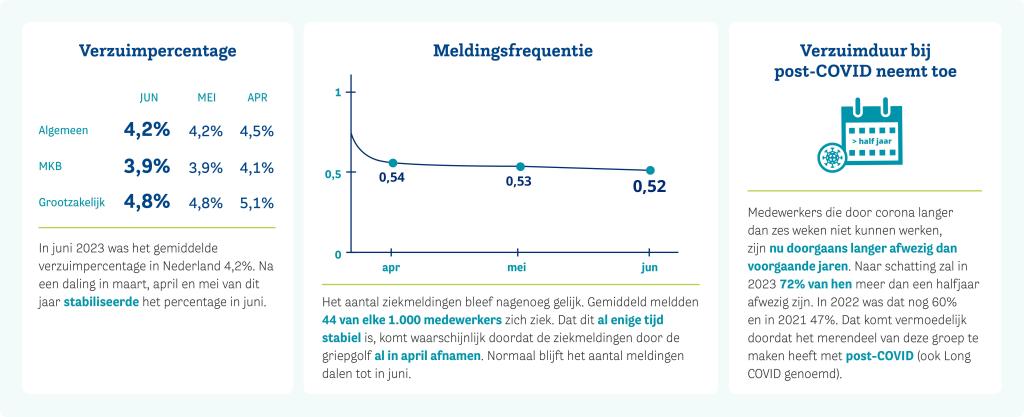No further drop in absenteeism in June

The number of absence notifications the same
Besides the absence rate, the number of absence notifications also remained the same in June. On average, 44 out of every 1,000 employees reported sick. The same number as in the months of April and May. The fact that the absence rate has remained stable for some time is probably related to the winter flu season. This year, it ended relatively early, from April. This meant that there were fewer absence notifications than usual in April. Normally, the number of absence notifications continues to fall until June.
Interestingly: the duration of sickness absence post-COVID has increased
The number of employees unable to work due to Covid fell significantly last year. However, HumanCapitalCare and ArboNed are seeing that employees who are unable to work for more than six weeks due to Covid tend to be absent for longer than in previous years. In 2023, it is estimated that 72% of them will be absent for over six months. In 2022, that was 60% and in 2021 47%. This is probably because most of those in this group were suffering from Long COVID.
Encourage holiday to recover
Meanwhile, the holidays have started in most of the Netherlands. That means that the working population of the Netherlands are enjoying their holidays. ‘Taking regular holidays gives employees the opportunity to recharge, enabling them to manage stress and workload better,’ says Jurriaan Penders, occupational physician and director of medical affairs at HumanCapitalCare. ‘In recent years, it has become even clearer that taking time to recover is very important. That boosts the ability to manage their work and helps prevent or limit absenteeism. Particularly in times of increased workload or staff shortages, when there is more pressure on employees.’